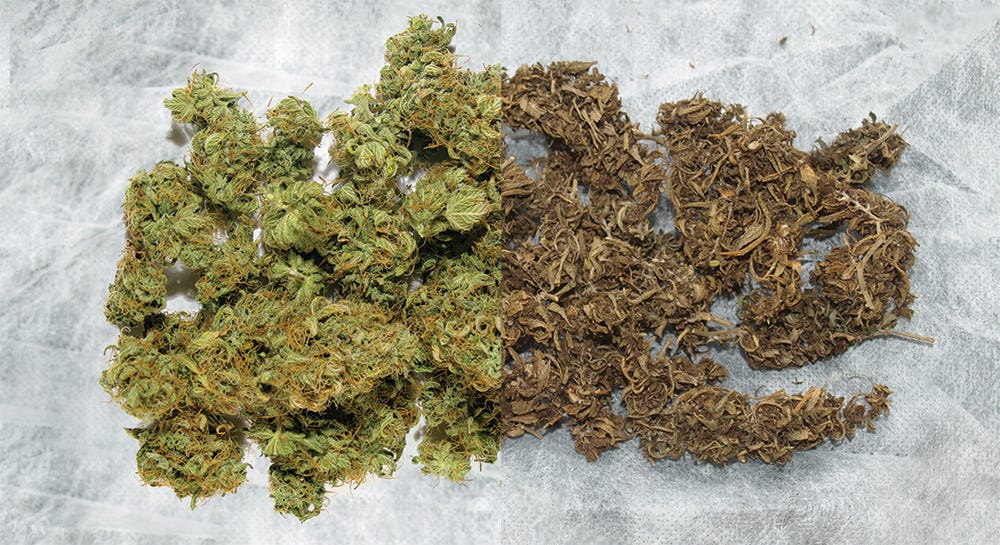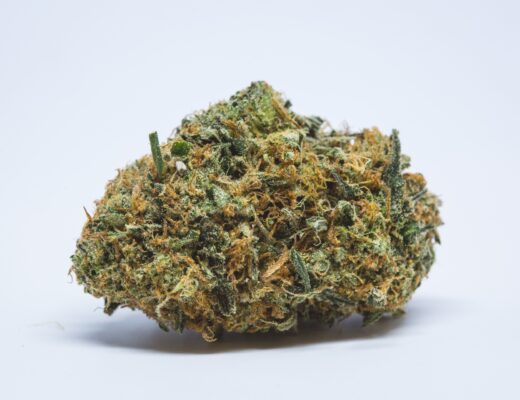Introduction
White Ryder is an autoflowering cannabis strain that has gained popularity among both medical and recreational cannabis users. It is a hybrid strain that offers a balanced combination of indica and sativa genetics, providing a well-rounded experience. In this comprehensive guide, we will explore everything you need to know about the White Ryder marijuana strain, including its origins, genetics, appearance, aroma, effects, medicinal uses, cultivation tips, and potential drawbacks.
Origins and Genetics
The White Ryder strain is a result of crossing two renowned cannabis strains: White Widow and Lowryder. White Widow, an indica-dominant hybrid, is known for its potent effects and resinous buds, while Lowryder is an autoflowering strain, meaning it does not require a specific light cycle to initiate flowering. By combining the genetics of these two strains, White Ryder inherits some of their best traits.
Appearance and Aroma
White Ryder plants typically grow to a medium height, making them suitable for both indoor and outdoor cultivation. The buds of this strain are dense and covered in a thick layer of sparkling trichomes, giving them a frosty, white appearance. The leaves are a vibrant green color with occasional purple hues, adding to the strain’s aesthetic appeal.
As for the aroma, White Ryder exudes a pleasant fragrance that is a harmonious blend of earthy, piney, and floral notes. Upon breaking open the buds, hints of sweetness and citrus may also be detected, adding to the overall aromatic experience.
Effects and Potency
The White Ryder strain delivers a well-balanced combination of both indica and sativa effects, making it suitable for various occasions. The strain’s THC content typically ranges from 15% to 20%, which places it in the moderate to high potency category. The CBD levels are usually lower, contributing to the strain’s psychoactive effects.
Upon consumption, White Ryder induces a relaxing and euphoric high. The initial cerebral effects are uplifting and mood-enhancing, allowing users to experience a sense of happiness and creativity. These mental effects gradually transition into a full-body relaxation that can be quite soothing and mildly sedative. As such, White Ryder is often chosen for evening or nighttime use, as it can lead to a calm and peaceful state, potentially aiding with sleep and stress relief.
Medicinal Uses
White Ryder has various potential medicinal applications, thanks to its balanced effects. Some of the primary therapeutic benefits of this strain include:
- Pain Relief: The strain’s analgesic properties can help alleviate various types of pain, such as chronic pain, migraines, and muscle aches.
- Stress and Anxiety Relief: White Ryder’s relaxing effects may provide relief for individuals dealing with stress, anxiety, and related mood disorders.
- Insomnia Treatment: The strain’s sedative properties can assist with insomnia and sleep disorders, promoting a restful night’s sleep.
- Appetite Stimulation: White Ryder can increase appetite, making it potentially beneficial for individuals experiencing a lack of appetite due to medical conditions or treatments.
- Mood Disorders: The strain’s uplifting effects may be useful for those dealing with depression and other mood disorders.
- Nausea and Vomiting: White Ryder may help reduce feelings of nausea and vomiting, particularly in individuals undergoing chemotherapy or experiencing gastrointestinal issues.
It is important to note that individual responses to cannabis strains can vary, and using cannabis as a form of medical treatment should be discussed with a qualified healthcare professional.
Cultivation Tips
White Ryder is popular among both novice and experienced growers due to its autoflowering nature and relatively straightforward cultivation requirements. Here are some essential tips for successfully growing White Ryder cannabis:
- Growing Environment: White Ryder can thrive both indoors and outdoors. Indoors, it prefers a well-ventilated space with sufficient humidity control. Outdoors, it does best in a sunny, Mediterranean-like climate.
- Lighting: As an autoflowering strain, White Ryder does not require a specific light cycle for flowering. However, providing 18-20 hours of light during the vegetative stage can promote optimal growth.
- Soil and Nutrients: Use a high-quality, well-draining soil mix. During the vegetative phase, provide balanced nutrients rich in nitrogen, phosphorus, and potassium. In the flowering phase, switch to a bloom-specific nutrient formula.
- Training: While White Ryder usually grows to a manageable size, training techniques like low-stress training (LST) can help improve light penetration and overall yield.
- Harvesting: White Ryder has a relatively short flowering time of around 8 to 10 weeks. Harvest the buds when the trichomes are milky white, signaling peak potency.
- Yield: Expect moderate yields from White Ryder plants, typically ranging from 200 to 300 grams per square meter indoors, and slightly more when grown outdoors.
Potential Drawbacks
While White Ryder has numerous positive qualities, it is essential to consider potential drawbacks when consuming this strain:
- Dry Mouth and Eyes: As with many cannabis strains, dry mouth (cottonmouth) and dry eyes are common side effects when using White Ryder. Staying hydrated can help alleviate these discomforts.
- Paranoia and Anxiety: In some individuals, high-THC strains like White Ryder may trigger feelings of paranoia or anxiety. It is advisable to start with a low dose if you are sensitive to THC.
- Sedation: While the sedative effects of White Ryder can be beneficial for insomnia, it may not be suitable for daytime use or for those seeking an energizing experience.
- Cognitive Impairment: Excessive consumption of any cannabis strain, including White Ryder, may impair cognitive function and motor skills. Avoid driving or operating heavy machinery while under the influence.
- Psychological Dependence: As with any cannabis strain, prolonged and excessive use of White Ryder can potentially lead to psychological dependence and cannabis use disorder.
Conclusion
White Ryder is a versatile and well-balanced cannabis strain that offers a range of effects suitable for various occasions and potential medicinal uses. With its autoflowering properties and moderate-to-high potency, it has become a favorite among growers and consumers alike. Remember to consume responsibly, start with a low dosage if you are a beginner, and always prioritize your health and well-being when using cannabis.
As legislation and cannabis strains can change over time, it is essential to verify the legal status and current information about White Ryder and cannabis in your area before cultivation or consumption. Enjoy your cannabis experiences responsibly and in compliance with local laws and regulations.
- White Ryder Marijuana Strain - September 23, 2023
- What are the Best THC-P GUMMIES - July 24, 2023
- Is Sour Cream Keto-Friendly? - July 18, 2023


